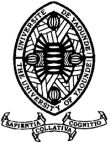Impact of Reactive Vaccination on the 2021 Meningitis Epidemic in Banalia
Impact de la Vaccination Réactive sur l'Epidémie de Méningite de 2021 à Banalia
DOI:
https://doi.org/10.5281/hra.v2i5.5580Keywords:
Méningite, Banalia, vaccin méningococciqueAbstract
ABSTRACT
Introduction. The Banalia health zone reported a meningitis epidemic in 2021 that evolved outside the epidemic season. The aim of our study was to report challenges and best practices in implementing outbreak response interventions and assess their effects on the epidemiological evolution of the bacterial meningitis epidemic in Banalia. Methods. This cross-sectional study was retrospectively conducted from July to December 2021 in Banalia Health, which comprises 20 health areas with 171,001 inhabitants. The standard case definition was used to identify cases. Care was provided to 2,651 in-patients, with 8% of them laboratory tested, and reactive vaccination was conducted. The Wilcoxon–Mann–Whitney test was used to assess the relationship between cases that occurred before and after reactive vaccination. Results. Overall, 2,662 suspected cases of meningitis with 205 deaths were reported. Individuals aged 30–39 years were the most affected (38.5%). Case fatality rate decreased from 70.4% at the beginning of the epidemic to 7.7% . Neisseria meningitidis W was the predominant pathogen isolated, accounting 82% of the confirmed cases, of which 92% of the strains belonged to the clonal complex 11. Reactive vaccination of individuals in Banalia aged 1–19 years with a meningococcal multivalent conjugate (ACWY) vaccine (Menactra®) coverage of 104.6% resulted in an 82% decline in suspected meningitis cases (IRR= 0.18; 95% IC, 0.02–0.80; p = 0.041). Conclusion. Despite late detection and response to the meningitis epidemic in Banalia, reactive vaccination contributed to the control of the epidemic.
RESUME
Introduction. The Banalia health zone reported a meningitis epidemic in 2021 that evolved outside the epidemic season. The aim of our study was to report challenges and best practices in implementing outbreak response interventions and assess their effects on the epidemiological evolution of the bacterial meningitis epidemic in Banalia. Methods. This cross-sectional study was retrospectively conducted from July to December 2021 in Banalia Health, w hich comprises 20 health areas with 171,001 inhabitants. The standard case definition was used to identify cases. Care was provided to 2,651 in-patients, with 8% of them laboratory tested, and reactive vaccination was conducted. The Wilcoxon–Mann–Whitney test was used to assess the relationship between cases that occurred before and after reactive vaccination. Results. Overall, 2,662 suspected cases of meningitis with 205 deaths were reported. Individuals aged 30–39 years were the most affected (38.5%). Case fatality rate decreased from 70.4% at the beginning of the epidemic to 7.7% . Neisseria meningitidis W was the predominant pathogen isolated, accounting 82% of the confirmed cases, of which 92% of the strains belonged to the clonal complex 11. Reactive vaccination of individuals in Banalia aged 1–19 years with a meningococcal multivalent conjugate (ACWY) vaccine (Menactra®) coverage of 104.6% resulted in an 82% decline in suspected meningitis cases (IRR= 0.18; 95% IC, 0.02–0.80; p = 0.041). Conclusion. Despite late detection and response to the meningitis epidemic in Banalia, reactive vaccination contributed to the control of the epidemic.
References
World Health Organization. Meningitis. Available at: https://www.who.int/health-topics/meningitis#tab=tab_1 Accessed 1 March 2023
World Health Organization. Meningococcal meningitis. Available at: https://www.who.int/teams/health-product-policy-and-standards/standards-and-specifications/vaccine-standardization/meningococcal-meningitis#:~:text=N.,particularly%20in%20sub%2DSaharan%20Africa. Accessed 5March 2023
Greenwood B. Meningococcal meningitis in Africa. In: R Soc Trop Hyg. Africa, Trans 1999; 93:341–53.
Marc LaForce FM, Ravenscroft N, Djingarey M, Viviani S. Epidemic meningitis due to Group A Neisseria meningitidis in the African meningitis belt: a persistent problem with an imminent solution. Vaccine 2009 ; 27(suppl 2):B13–9.
Frasch CE, Preziosi MP, LaForce FM. Development of a group A meningococcal conjugate vaccine, MenAfriVac(TM). Hum Vaccin Immunother 2012; 8:715–24.
Program for appropriate technology in health. The Meningitis Vaccine Project - frequently asked questions. Available at: https://www.path.org/resources/the-meningitis-vaccine-project-frequently-asked-questions/ Assessed 6 December 2022
Centers for Disease Control and Prevention. Bacterial meningitis. Available at: https://www.cdc.gov/meningitis/lab-manual/chpt01-intro.html. Assessed October 2022; 8
Lapeyssonnie L. Cerebrospinal meningitis in Africa. Bull World Health Organ 1963; 28(suppl):1–114
Global Burden of Disease Collaborative. Network. Glob Burden Dis Study 2019 (GBD 2019). Available at: http://www.healthdata.org/gbd/2019. Assessed 8 2022
Trotter CL, Lingani C, Fernandez K, et al. Impact of MenAfriVac in nine countries of the African meningitis belt, 2010-15: an analysis of surveillance data. Lancet Infect Dis 2017; 17:867–72.
Retchless AC, Hu F, Ouédraogo AS, et al. The establishment and diversification of epidemic-associated serogroup W meningococcus in the African Meningitis Belt, 1994 to 2012. mSphere 2016; 1:e00201–16.
Mounkoro D, Nikiema CS, Maman I, et al. Neisseria meningitidis Serogroup W Meningitis Epidemic in Togo, 2016. J Infect Dis 2019; 220(suppl 4):S216–24.
Koumaré B, Ouedraogo-Traoré R, Sanou I, et al. The first large epidemic of meningococcal disease caused by serogroup W135, Burkina Faso, 2002. Vaccine 2007; 25(suppl 1):A37–41.
Sidikou F, Zaneidou M, Alkassoum I, et al. Emergence of epidemic Neisseria meningitidis serogroup C in Niger, 2015: an analysis of national surveillance data. Lancet Infect Dis 2016; 16:1288–94.
Traoré Y, Njanpop-Lafourcade BM, Adjogble KL, et al. The rise and fall of epidemic Neisseria meningitidis serogroup W135 meningitis in Burkina Faso, 2002-2005. Clin Infect Dis 2006; 43:817–22.
Maïnassara HB, Oumarou GI, Issaka B, et al. Evaluation of response strategies against epidemics due to Neisseria meningitidis C in Niger. Trop Med Int Health 2017; 22:196–204.
MacNeil JR, Medah I, Koussoubé D, et al. Neisseria meningitidis serogroup W, Burkina Faso, 2012. Emerg Infect Dis 2014; 20:394-9.
Topaz N, Caugant DA, Taha MK, et al. Phylogenetic relationships and regional spread of meningococcal strains in the meningitis belt, 2011–2016. EBiomedicine 2019; 41:488–96.
Mohammed I, Nasidi A, Alkali AS, et al. A severe epidemic of meningococcal meningitis in Nigeria, 1996. Trans R Soc Trop Med Hyg 2000; 94:265–70.
Chow J, Uadiale K, Bestman A, et al. Invasive meningococcal meningitis serogroup C outbreak in northwest Nigeria, 2015—third consecutive outbreak of a new strain. PLOS Curr 2016; 8:ecurrents.outbreaks.06d10b6b4e690917d8b0a04268906143.
World Health Organization country office Democratic Republic of Congo, 2016. Available at: https://www.who.int/emergencies/disease-outbreak-news/item/2021-DON334meningitis epidemic in DRC in. Democratic Republic of the Congo: Meningitis Assessed 20 September 2021.
World Health Organization. Control of epidemic meningitis in countries in the African meningitis belt, 2021. Wkly Epidemiol Rec 2022; 35:409–23
Bwaka AM, Bita A, Lingani C, et al. Status of the rollout of the meningococcal serogroup A conjugate vaccine in African meningitis belt countries in 2018. J Infect Dis 2019; 220(suppl 4):S140–7.
Arsene Bita Fouda AA. Epidemiological status of bacterial meningitis disease following the introduction of the meningococcal A conjugate vaccine in the African meningitis belt. Int J Immunol 2019; 7:12–22.
Ministry of Public Health hygiene and prevention of Democratic Republic of Congo. Epidemiological Situation report n° 109. December 20, 2021
Ministry of Public Health hygiene and prevention of Democratic Republic of Congo. After Action review report, March 2022
Ministry of Public Health hygiene and prevention of Democratic Republic of Congo. End meningitis epidemic in Banalia health zone report, March 2022
World Health Organization regional office. Standard Operating procedures for surveillance of meningitis preparedness and response to epidemics in Africa, 2018. Available at: https://apps.who.int/iris/bitstream/handle/10665/312141/9789290234241-eng.pdf. Assessed 17 July 2021. Brazzaville
Lingani C, Bergeron-Caron C, Stuart JM, et al. Meningococcal meningitis surveillance in the African meningitis belt, 2004-2013. Clin Infect Dis 2015; 61(suppl 5):S410–5.
World Health Organization. Meningococcal vaccines: WHO position paper, November 2011. Wkly Epidemiol Rec 2011; 86:521–39
Jolley KA, Brehony C, Maiden MC. Molecular typing of meningococci: recommendations for target choice and nomenclature. FEMS Microbiol Rev 2007; 31:89–96.
Taha MK. Simultaneous approach for nonculture PCR-based identification and serogroup prediction of Neisseria meningitidis. J Clin Microbiol 2000; 38:855–7.
Helena De Oliveira LH, Jauregui B, Carvalho AF, Giglio N. Impact and effectiveness of meningococcal vaccines: a review. Rev Panam Salud Publ 2017; 41:1–19.
Ministry of Public Health hygiene and prevention of Democratic Republic of Congo. Response campaign against meningitis, rural health zone of Banalia report, 2021
Potobawi EA, , Yanogo K,2, Kaboré M, Hamadi OS, Tamekloe TA. Neisseria Meningitidis C Meningitis Epidemic after Mass Vaccination Campaign against Meningococcus A in the District of Kpendjal: Factors Associated with the Disease, a Case-Control Study. 2022. Health Sci. Dis: 23 (3): 25-30
Downloads
Published
How to Cite
Issue
Section
License
Authors who publish with this journal agree to the following terms:
- Authors retain copyright and grant the journal right of first publication with the work simultaneously licensed under a Creative Commons Attribution License CC BY-NC-ND 4.0 that allows others to share the work with an acknowledgement of the work's authorship and initial publication in this journal.
- Authors are able to enter into separate, additional contractual arrangements for the non-exclusive distribution of the journal's published version of the work (e.g., post it to an institutional repository or publish it in a book), with an acknowledgement of its initial publication in this journal.
- Authors are permitted and encouraged to post their work online (e.g., in institutional repositories or on their website) prior to and during the submission process, as it can lead to productive exchanges, as well as earlier and greater citation of published work










